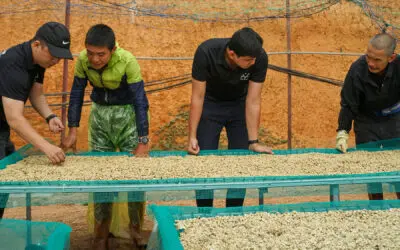The Real Price of Your Morning Cup: Why Supporting Coffee Cooperatives Isn’t Just Feel-Good BS
Let’s cut through the marketing fluff: Coffee cooperatives aren’t just some fair-trade fairy tale – they’re the backbone of specialty coffee and possibly our best shot at preserving both quality and sustainability in an industry that’s increasingly squeezed by climate change and corporate consolidation.
Here’s the reality: About 80% of the world’s coffee is produced by approximately 25 million smallholder farmers, most of whom cultivate less than 5 hectares of land. These aren’t massive plantations with mechanized harvesting – we’re talking about families who hand-pick every cherry, often on steep mountainsides where the best coffee grows.
The Math Doesn’t Lie
A typical smallholder farmer produces around 2,000 pounds of green coffee annually. At current commodity prices (hovering around $2.50/lb), that’s US$5,000 gross revenue – before costs. Factor in fertilizer, labor, and processing, and you’re looking at margins thinner than a badly pulled espresso shot.
This is where cooperatives come in, and why they matter to your morning pour-over:
1. Economies of Scale
When farmers band together, they gain negotiating power. Instead of selling to local middlemen at rock-bottom prices, cooperatives can access better markets, command premium prices, and invest in quality-improving infrastructure like moisture meters and raised drying beds.
2. Knowledge Transfer
The best cooperatives aren’t just trading organizations – they’re centers of agricultural expertise. Members share best practices, from pruning techniques to fermentation protocols. This matters because quality isn’t just about altitude and varietals – it’s about execution.
3. Risk Management
Coffee farming is a high-risk business. One bad frost, coffee leaf rust outbreak, or price crash can wipe out years of work. Cooperatives often provide access to credit, insurance, and disaster relief that individual farmers couldn’t access alone.
Want to Support Real Change? Here’s How:
1. Buy Direct Trade Coffee
Look for roasters who maintain direct relationships with cooperatives. Companies like The Colombian Coffee Roasters, Phil & Sebastian, Iconoclast Coffee Roasters, and Green Coffee Co. (for home roasters) publish detailed information about their cooperative partners and pricing.
2. Pay Attention to Processing
When cooperatives can invest in better processing facilities, farmers can experiment with honey, natural, and extended fermentation methods that command higher prices. These coffees might cost more, but they’re worth it – both for the cup quality and the impact.
3. Consider Home Roasting
Green coffee costs about 1/3 of what roasted coffee does. By roasting at home, you can afford to buy better beans while still saving money. Plus, many importers focused on cooperatives sell directly to home roasters.
The Brutal Truth
The specialty coffee industry loves to talk about sustainability, but here’s what many won’t tell you: Without strong cooperatives, we’re looking at a future where coffee becomes either an industrialized commodity or a luxury product grown on massive estates. The middle ground – where quality, sustainability, and accessibility meet – depends on supporting smallholder farmers through effective cooperative structures.
For verification of these points, check out the International Coffee Organization’s latest market report or the Specialty Coffee Association’s Price Crisis Response Initiative. The data is clear: cooperatives aren’t perfect, but they’re our best bet for preserving both coffee quality and farmer livelihoods.
Bottom Line
Your choice of coffee matters more than you think. Every bag of cooperative-produced coffee you buy is a vote for a more sustainable industry. And here’s the kicker – it’s usually better coffee too, because farmers who can invest in quality produce better beans.
Want to dive deeper? Join our online community here at Bean Indigo where we discuss direct trade relationships, processing methods, and the real impact of your coffee choices. Be sure to subscribe to The Coffee Authority Weekly if you haven’t already. Drop your thoughts in the comments below, and let’s build a coffee future that doesn’t suck for the people growing our favourite beverage.



0 Comments